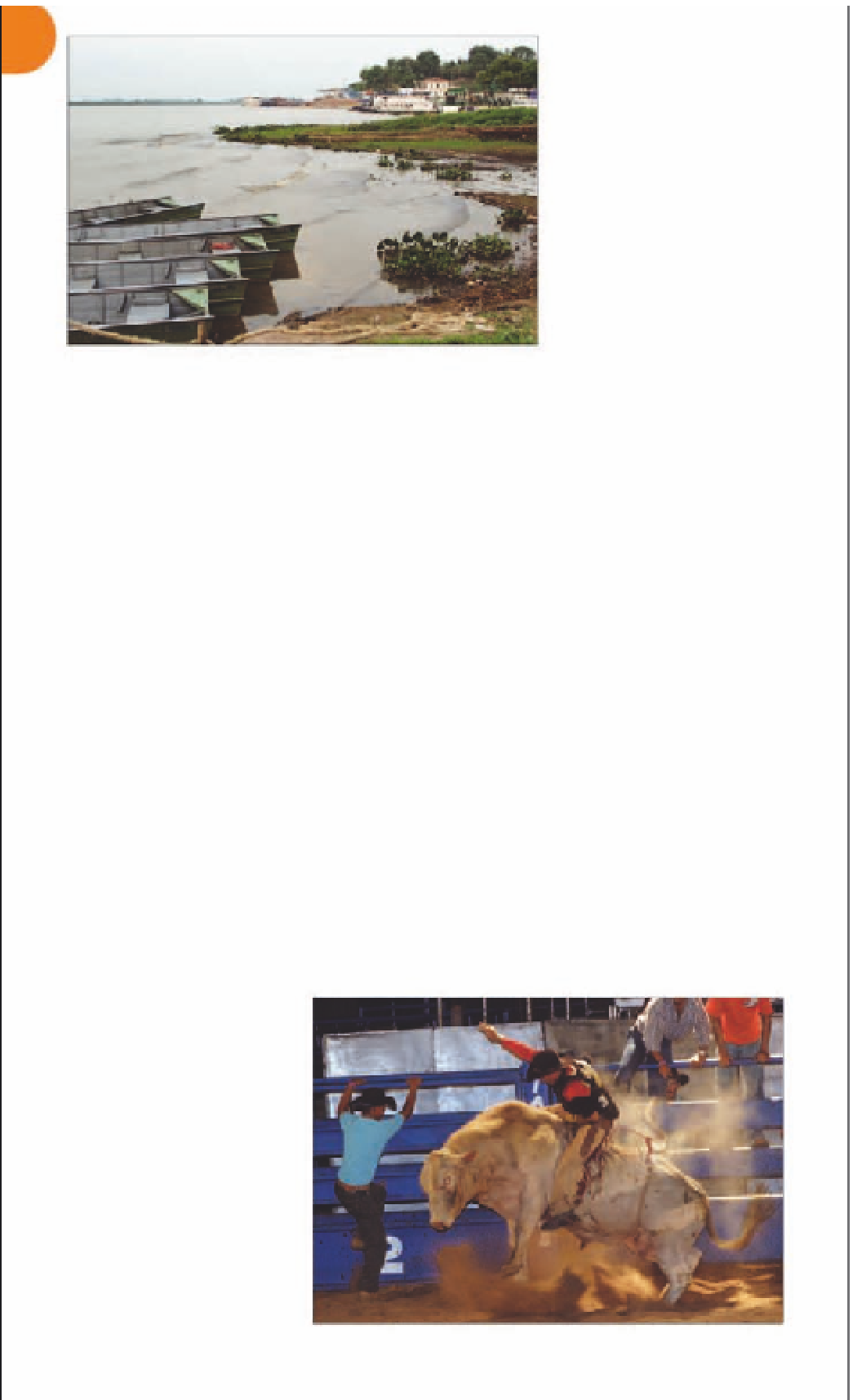Travel Reference
In-Depth Information
lake and extensive forest. The
Fazenda Meia Lua
lies just on
the edge of town and is an
ideal soft adventure option.
Environs
Known for their distinctive
painted terra-cotta ceramics,
the Terena
indigenous villages
surround Miranda. Tour opera-
tors in Miranda can arrange
trips to a Terena village, as
well as to the
Rio Salobrinho
,
a beautiful clear-water river
lined with gallery forest.
Expect to find rare bird spe-
cies, including kingfishers and
black-crowned night herons.
Boats moored on the Rio Paraguai, Corumbá
Corumbá
6
Mato Grosso do Sul.
*
95,000.
~
£
@
g
along Rio Paraguai.
n
Secretaría de Turismo, (067) 3231
2886.
_
Festa de Nossa Senhora
de Candelária (Oct).
Miranda
7
Mato Grosso do Sul.
*
23,000.
£
@
n
Setur, (067) 3242 2471.
_
Festa do Homem Pantaneiro (Oct).
Campo Grande
8
Mato Grosso do Sul.
*
665,000.
k
~
£
@
n
Centro Informação
Turistica e Cultural, (067) 3314 3142.
The tiny town of Miranda,
in the heart of the Pantanal,
hosts the region's liveliest
festival, the Festa do Homem
Pantaneiro. This grand cele-
bration of the ranching and
cowboy way of life features
lasso contests (in the morn-
ings for women, at night
for men), and rodeos. Live
sertanejo
bands and dancing
carry on all night.
Miranda is an ideal base
for visiting the southern
Pantanal's various
fazenda
ranches
(see pp385-6)
, many
of which lie on the outskirts
of town. The
Fazenda San
Francisco
is one of the best
locations in inland Brazil for
big cats, especially ocelot
and jaguar. The
Fazenda Baía
Grande
preserves a diverse
range of Pantanal habitats,
including a large caiman-filled
On the banks of the Rio
Paraguai, Corumbá is a
small town surrounded by
the Pantanal region's unspoilt
beauty. Boat rides along the
river, as well as wetland
excursions form Corumbá's
major attractions. Sportfishing,
one of the main highlights, is
provided at the nature lodges,
floating hotels, and charming
fazendas
in this area.
Corumbá was first explored
by Portuguese and Spanish
adventurers in search of
gold. By the 18th century,
the growing strategic impor-
tance of the Rio Paraguai led
to the construction of forts.
The
Forte Junqueira
, built
during the Paraguayan War
(see p53)
, is the only fort
still standing intact.
Another place worth a
visit is the
Casa do Artesão
,
a former prison housing
an interesting museum of
indigenous and local objets
d'art. The
Museu do Pantanal
also has a small collection of
indigenous art.
E
Casa do Artesão
Rua Dom Corréa 405.
#
7:30-11am
& 1:30-5pm Mon-Fri, 8-11am Sat.
P
Forte Junqueira
Rua Cáceres 425.
Tel
(067) 3231
5828.
#
8-11am & 1:30-4:30pm
Mon-Fri.
E
Museu do Pantanal
Praça de República.
Tel
(067) 3231
5757.
#
7:30am-1:30pm Mon-Fri.
Mato Grosso do Sul's capital,
Campo Grande is also known
as Cidade Morena because
of its red earth. It is a pros-
perous, modern city devoted
far more to agro-business
than tourism. Yet most visitors
to the southern Pantanal
arrive here because the tourist
infrastructure is excellent.
Commerce, education, and
toursim are fast growing
industries here. The city
itself has few major
attractions, though there
are many good restaurants,
hotels, and bars, particularly
along and around Rua Barão
do Rio Branco. For those who
do not want to rough it out
with a Pantanal camping tour,
travel agencies sell packages
to pleasant farm hotels.
Rodeo at the Festa de Homem Pantaneiro
For hotels and restaurants in this region see pp385-6 and pp409-10






































